猫は明日も私の花瓶を決まって倒す
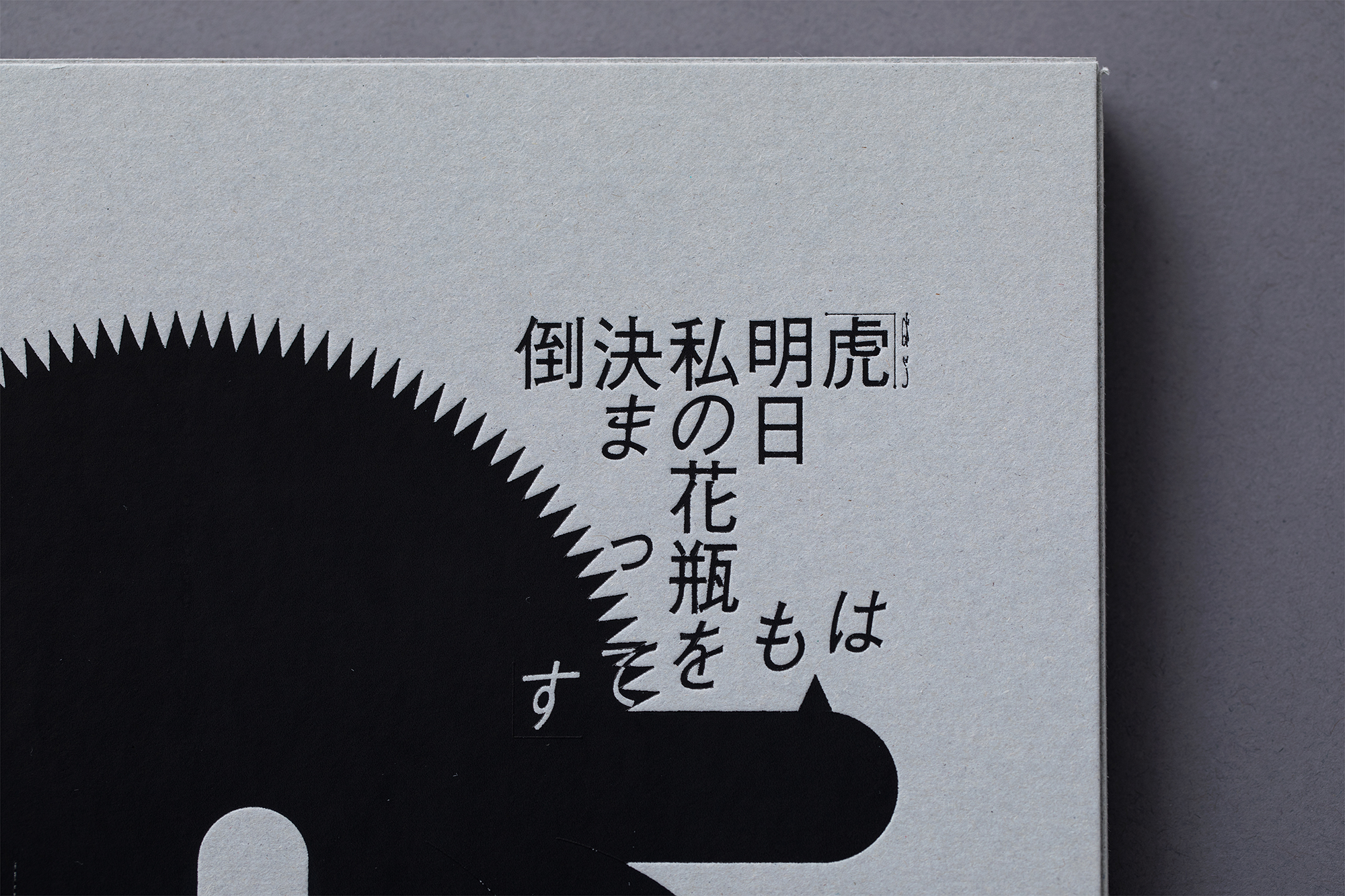
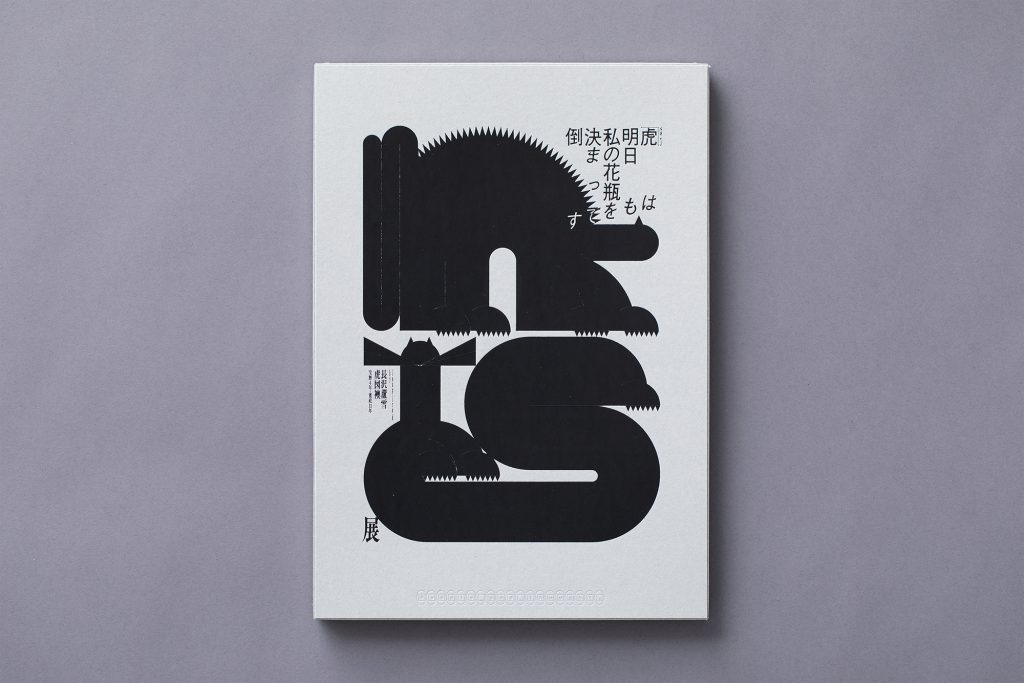
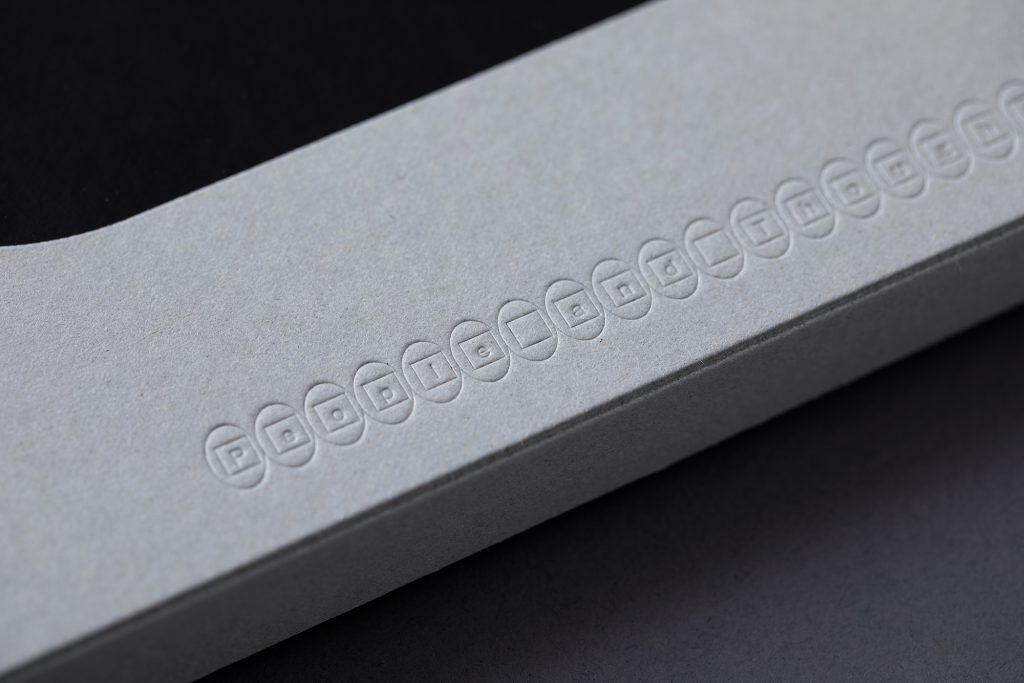
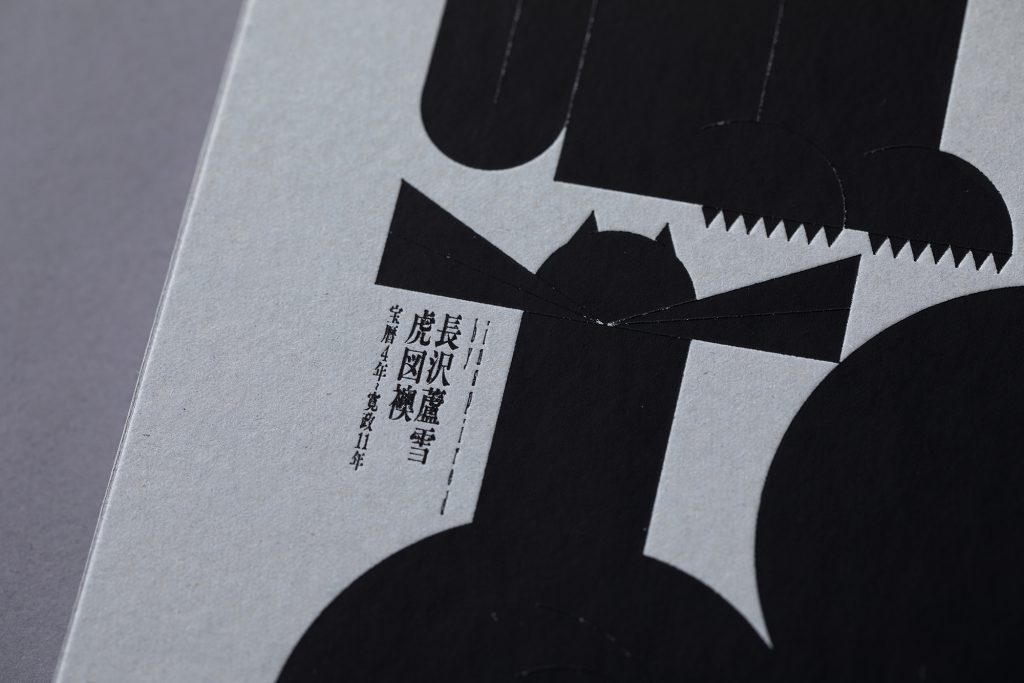
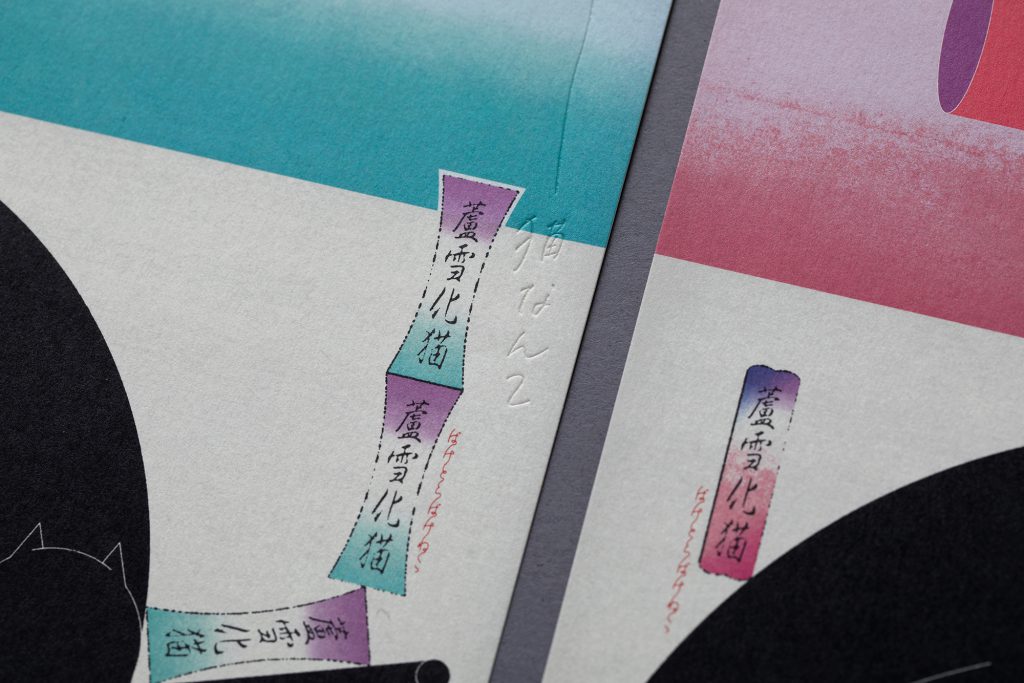
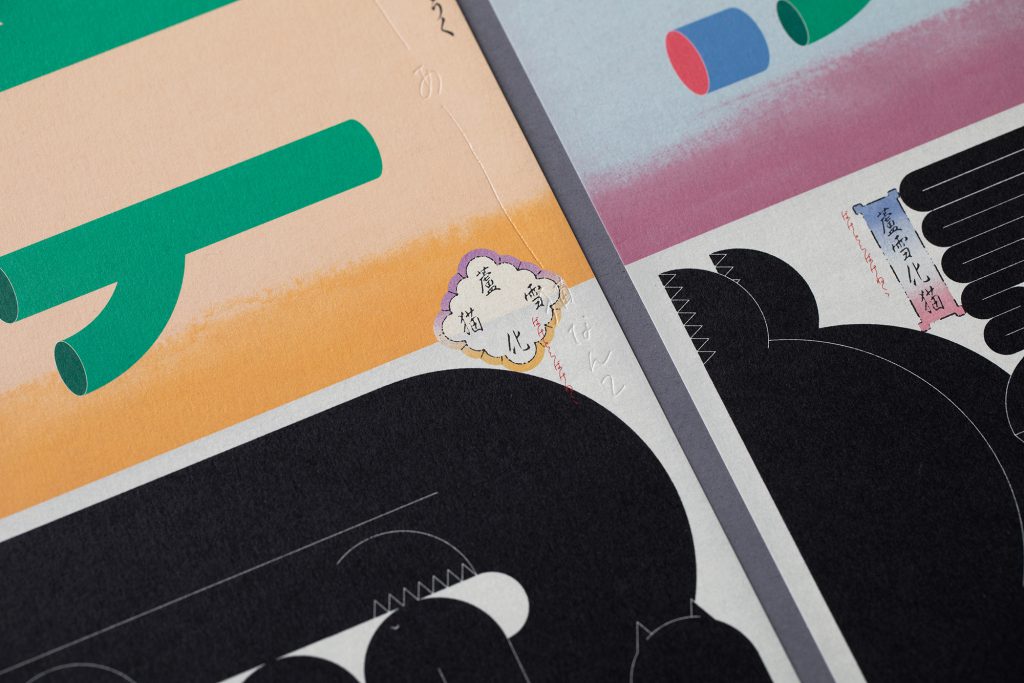


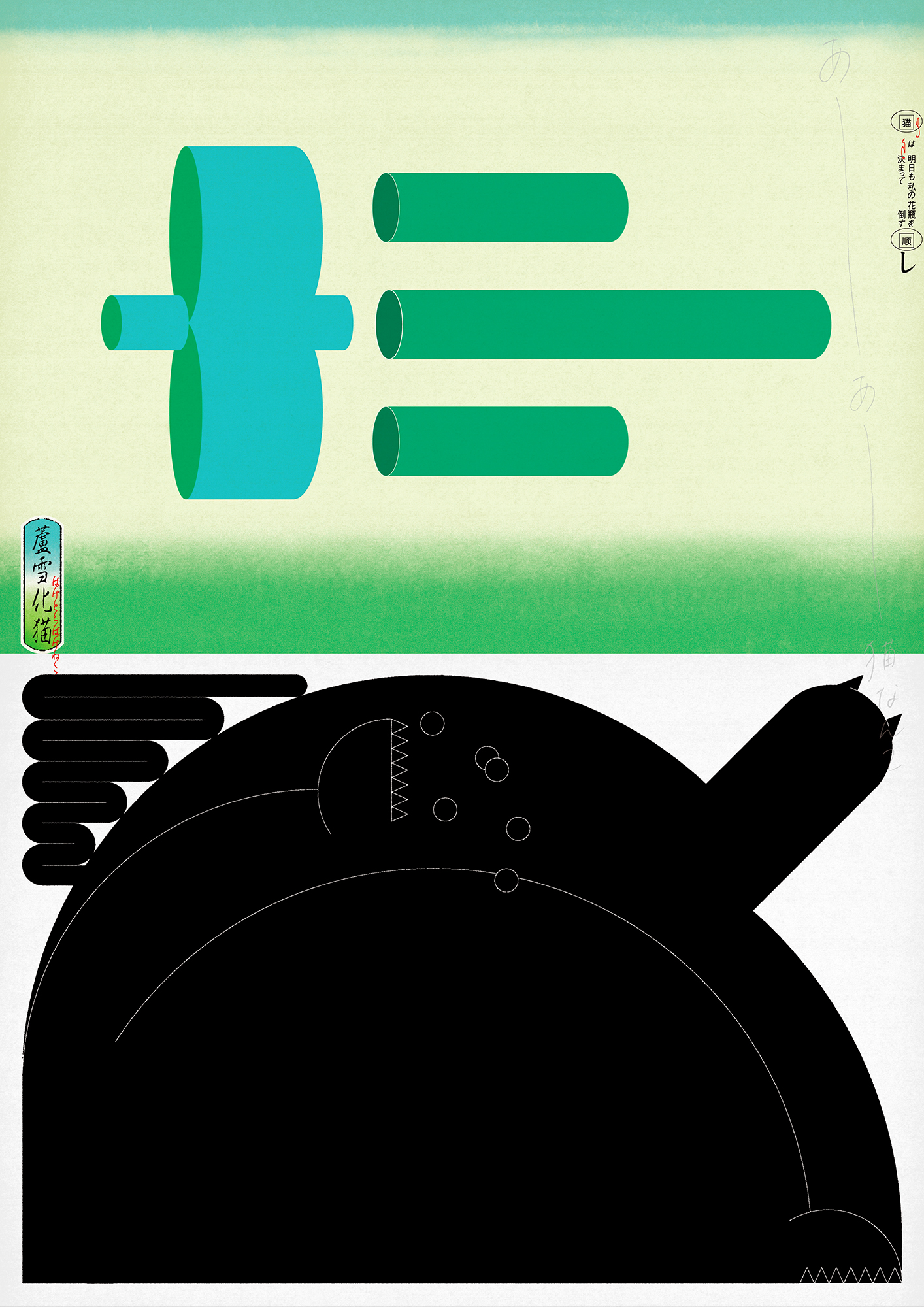
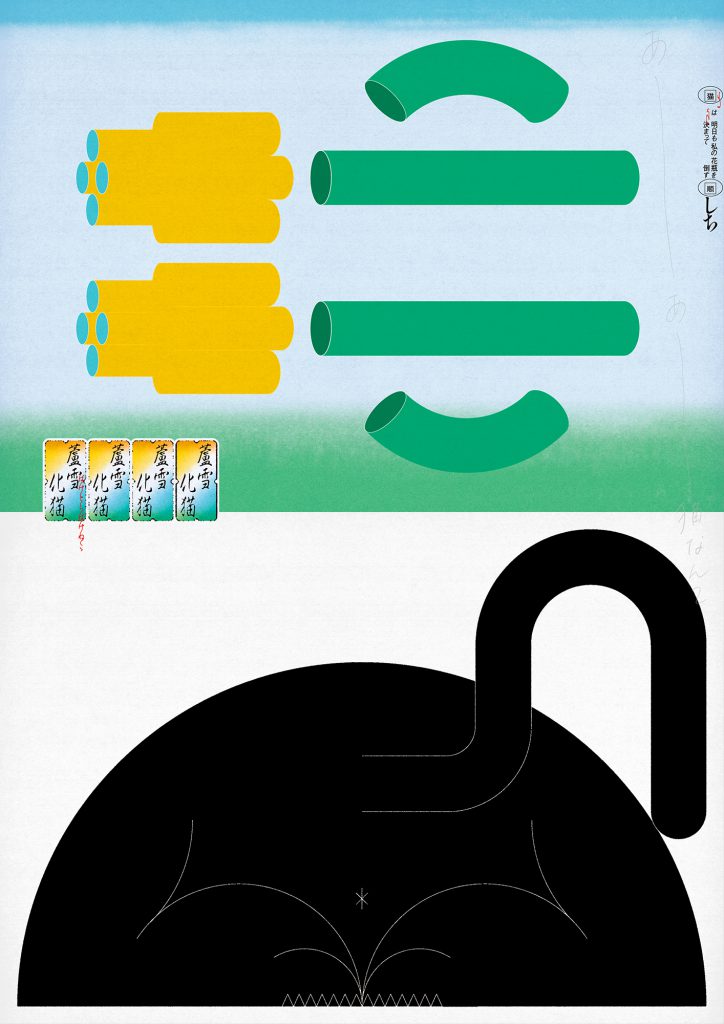
Based on the thinking that, “to not depict a cat as it is, is to express it’s true essence,” I assembled 30 different unbalanced combinations of cats and flowers, for this pictorial record of the exhibition, “As Usual, My Cat Knocks Over The Vase.” The result is an irresistible masterpiece for cat lovers, depicting individual scenes of living life with a feline.
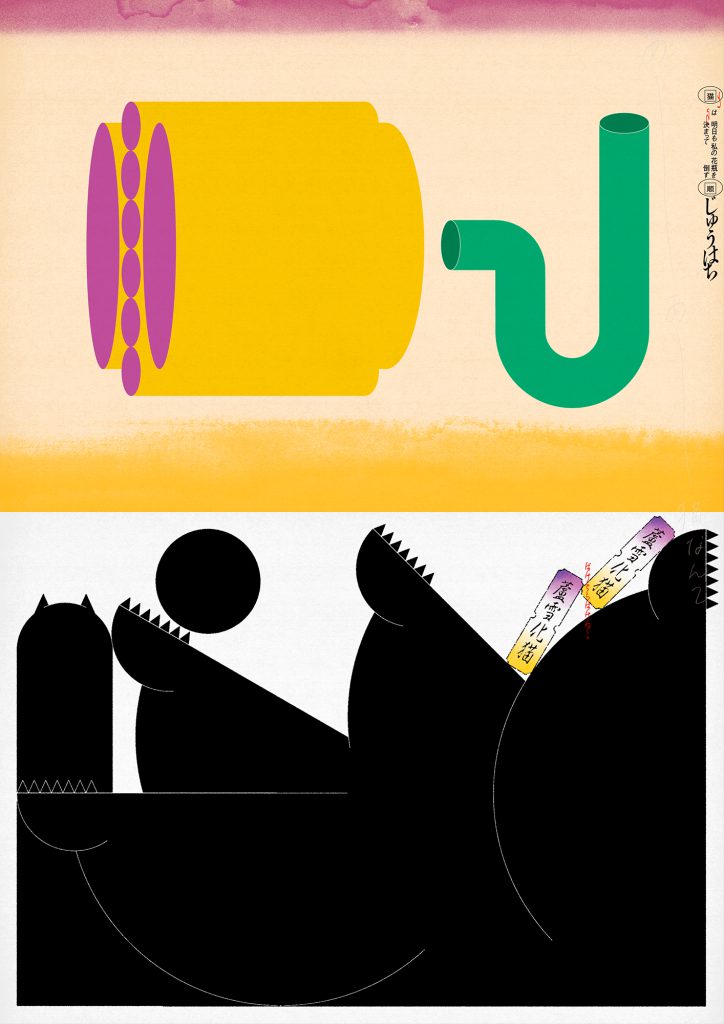
In ancient Japan, during the Edo period, lived a painter named Utagawa Kuniyoshi. He often painted bakeneko (monster cats) and nekomata (a mythical two-tailed monster cat), but even in such strange compositions, I felt that he somehow expressed what made a cat unique—because I felt that the cumulation of a cat’s fluid framework, and his depictions of cats in mutated forms instead of in a straightforward manner, evoked the essence of cat-ness. Manga or caricatures, which capture the essence of someone by depicting an exaggeration of some characteristic portion of their being, are perhaps similar. Furthermore, there is a woman named Nagasawa Rosetsu—a contemporary of Utagawa.
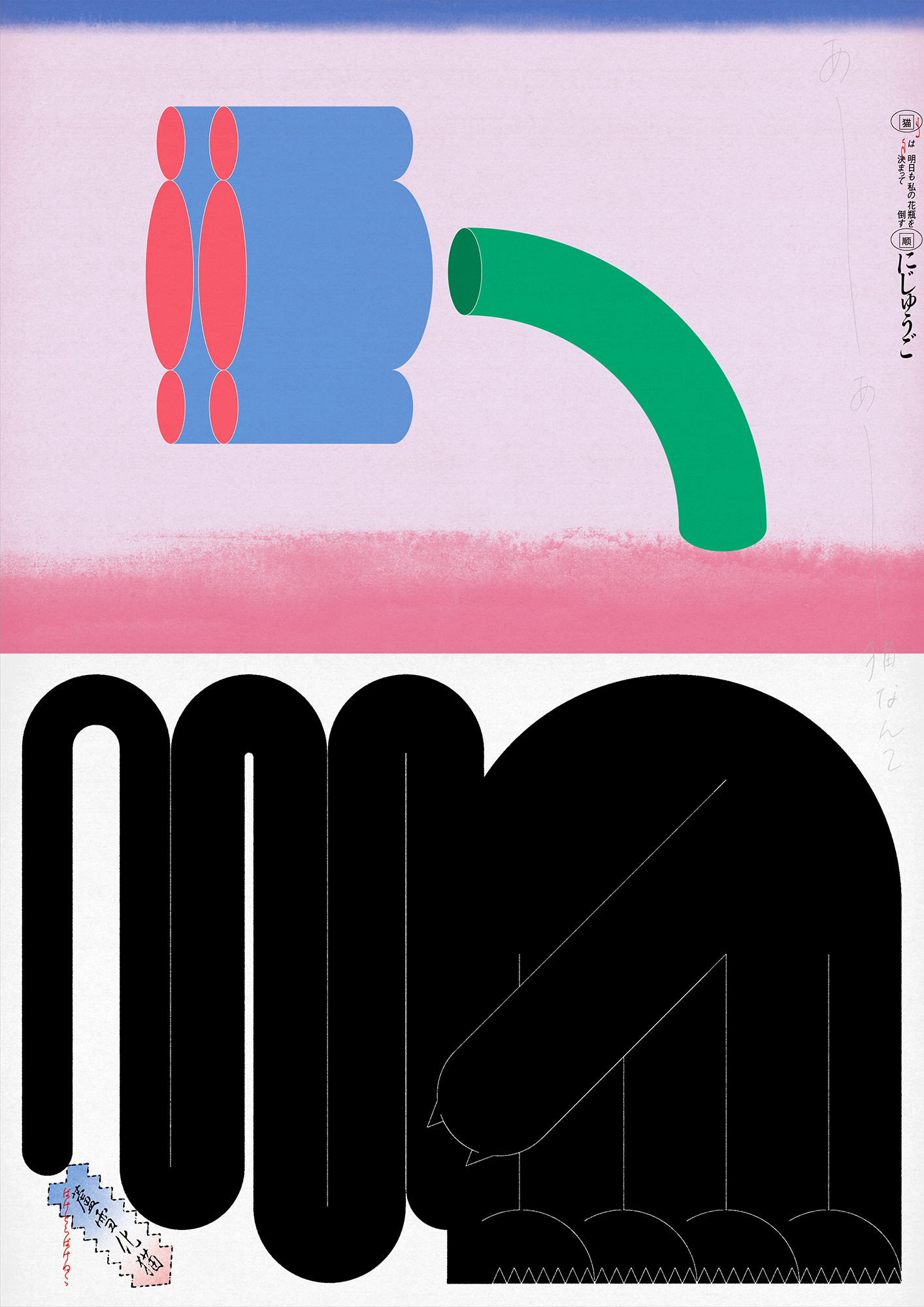
One of her most famous paintings is the “Torazu Fusuma,” which features a tiger depicted majestically on the front panel of a sliding door. Curiously, its tail is strangely long, somehow resembling a cat’s. The fact is, the sliding door’s back panel features a painting of a cat, about to pounce upon some fish swimming in water. This cat is juxtaposed as the true appearance of the tiger on the front panel. In other words, the tiger is, from the fishes’ perspective, simply an enormous cat. We feel that within such expressively “expectation-defying” or “gimmicky” techniques, exists the true essence of the cat. Nagasawa’s “Torazu Fusuma” does indeed depict the cat’s toughness, and its indomitable personality. We, inspired by Nagasawa’s tiger painting, made the deliberate decision to blacken and obscure this motif, rendering it unrecognizable as a cat. And then, without resorting to any generally comprehensible compositional arrangement, by exaggerating and intentionally dramatizing its strangeness, we distanced ourselves from any sense of portraiture of a realistic cat. In doing so, as stated earlier, we succeeded in capturing “a cat’s true essence.”
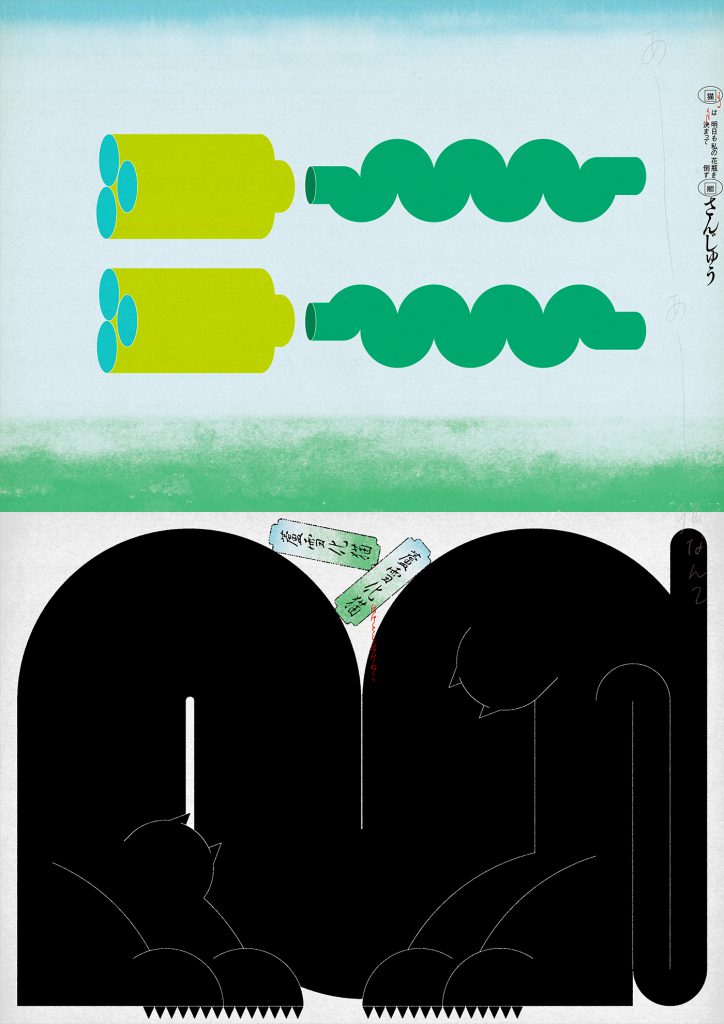
「猫をそのままの姿で描かないことこそが猫の本質が表現される」という考えのもと、全30種の猫と花のアンバランスな組み合わせでまとめた、展覧会「猫は明日も私の花瓶を決まって倒す」の図録です。猫と暮らす日々の1シーンは、猫好きにはたまらない逸品となりました。日本の昔、江戸時代の絵師に歌川国芳がいました。彼の作品の中には、化け猫・猫又が多く描かれているのですが、その異様な化け猫の構図にこそ、何故か猫らしさを表現できていると感じました。それは猫の定まらない骨格なども相まって、ストレートに猫を描写せずにデフォルメした捉え方に猫らしさがあると感じたためです。漫画や似顔絵などでも、ある特徴的な一部を誇張して描くことで、本質を捉えるイメージが近いかもしれません。さらに、同じ時代に長澤蘆雪という女性もいました。彼女の代表作には「虎図襖(とらずふすま)」というものがあり、その襖の表には堂々とした虎の絵が描かれているのですが、尻尾は異様に長く顔もどこか猫っぽい。実は、襖絵の裏面には水中の魚に飛びかかろうとしている猫の姿が描かれています。その猫が表の虎の真の姿という見立てになっています。つまり、襖の表の虎は魚の目線で見た大きな猫、というオチなのです。私たちはその「裏切られた・ギミック」と感じる表現方法にも、猫の本質があると感じました。猫の持つ強靭さや、媚びず支配できない性格を長沢蘆雪の虎図襖はまさに表現できているのです。私たちは長沢蘆雪の虎図襖にインスパイアされ、モチーフをあえて黒く塗りつぶし不明瞭にし猫とは認識させない。そして、一般的なわかりやすい猫の構図も使わずに、誇張し異様さを演出することで、リアルな猫の実像と距離をとりました。そうすることで、前段で述べた「猫の本質」を捉えることに成功したのです。
CREDIT
AD+D : ATSUSHI ISHIGURO / @ai_ouwn
D : ERIKO NAKAMURA / @hello_eriko